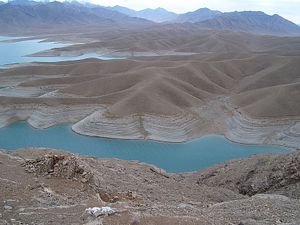Helmand, Afghanistan’s largest province, is slowly crumbling as the Taliban intensify their summer offensive against the Afghan government. On Wednesday, Nawa-i-Barakzayi district, adjacent to the provincial capital district of Lashkar Gah, became the latest of Helmand’s 14 districts to fall to the Taliban. With Nawa, the Taliban control 11 of 14 districts in the province. The fighting in Helmand has now gone on for several weeks, but the tide of the battle seems to be favoring the Taliban.
Particularly concerning are reports that the Taliban are in control of nearly all roads connecting the provincial capital of Lashkar Gah to the rest of Afghanistan. As of this writing, Afghan forces are battling for control of a highway connecting Lashkar Gah with Kandahar. If the Taliban’s offensive continues to yield successes and Afghan forces are unable to wrest control of the roads leading to Lashkar Gah, the city may become the second major urban center to fall to the Taliban insurgency since Kunduz last year.
NATO, in a statement, noted concern about the situation in Helmand. “The situation down there remains tense and somewhat contested,” the alliance noted in a statement, adding, “It remains an ongoing security concern and there has been fighting down there for the last several weeks. We remain confident that the Afghan forces are fighting effectively and that they will continue to secure Lashkar Gah.”
Officials in Lashkar Gah have suggested that time is running out for the city: “If we don’t receive support from the central government, the province will collapse soon,” Karim Atal, the provincial council chief, told Reuters. The city has seen an influx of 30,000 civilians displaced by fighting elsewhere in the province. “Around 30,000 people have been displaced in Helmand in the past several weeks. Most of them are coming to Lashkar Gah,” Omar Zawak, a spokesperson for the provincial governor, told AFP.
The influx has has caused a humanitarian crisis amid sharp shortages of food, clean water, and medicine. With supply routes cut off by fighting, supplies from the central government are unable to enter Lashkar Gah. Doctors Without Borders has reportedly reduced its operational presence in Lashkar Gah, evacuating some of its personnel and providing basic emergency services. Guile Molinie, the country representative for Doctors Without Borders in Afghanistan, told the Associated Press that he was “concerned about urban fighting — it is getting closer to the urban center.”
The current situation in Helmand reiterates just how critical U.S. battlefield support remains for Afghan security forces. According to the New York Times, the United States has been providing air support, which has allowed Afghan troops to incrementally hold back advances by the Taliban. Reuters reports that 25 U.S. air strikes have taken place to date. Last fall, when Kunduz fell, U.S. aerial support played an important role in helping the Afghan government recover control of the city.
In contrast to the worries of local officials in Lashkar Gah, Afghan and U.S. government officials suggest there’s nothing to be too concerned about, despite the ongoing struggle in Helmand. “We do not believe Lashkar Gah, or the province of Helmand, is about to fall,” U.S. Army Col. Michael Lawhorn, director of public affairs for the NATO Resolute Support Mission in Afghanistan, told Voice of America. Similarly, Afghan Interior Ministry spokesman Sediq Sediqqi voiced no concerns: “Our brave Afghan security forces will not allow terrorists and criminals to turn Helmand into their hideout,” he said.
The ongoing struggle in Helmand highlights the challenges that lie ahead for Afghanistan, regardless of the outcome in Lashkar Gah in the coming days and weeks. A recent announcement by the Obama administration to reduce the U.S. troop presence in Afghanistan from 9,800 to 8,400 for next year and further decreases in the U.S. presence through 2017 and beyond means that Afghan security forces will increasingly have to go it alone against the Taliban. In the first half of 2016, the U.S. Special Inspector General for Afghanistan Reconstruction noted that the Afghan central government ceded control of nearly 5 percent of its territory to the Taliban, and now controls just 65.6 percent of the country. Indeed, the Taliban controls more territory now than at any point since the initial U.S. invasion back in 2001.
Helmand is a particularly attractive province for the Taliban in its ongoing struggle for territory. The province is by far the most significant locus of opium production in the entire country; earlier this year, Helmand yielded a particularly strong opium harvest, benefiting the Taliban, which already controlled significant areas of the province. The Taliban extracts considerable revenue from the narcotics trade (PDF). Moreover, the province’s southern border connects it to the Pakistani province of Balochistan, where opium traffickers move heroin and morphine base out of the country.
The geographic control by Taliban fighters of the areas around Lashkar Gah means that should the city fall in the coming days, Afghan ground forces won’t be able to proffer a direct challenge, as they did in Kunduz last year, abetted by U.S. airpower. The United States can continue to strike Taliban positions around the city, but without some degree of penetration by Afghan security forces into Lashkar Gah, the campaign to retake any significant territory in Helmand may be long and arduous.

































